When people thrive, business thrives. One study concludes that ‘highly engaged businesses see a 20% increase in sales’ and a ‘10% increase in customer ratings.’
It’s human nature. Happy, motivated, engaged employees are key to propelling businesses forward. If you feel a part of something that matters, something to which you feel you can contribute, and help to achieve successful outcomes, then you feel positive and motivated. You are engaged in the business because of your sense of wellbeing.
Simple in theory, but it doesn’t just happen automatically. So let’s look at what constitutes poor/effective employee engagement, beginning with an important definition:
Employee Engagement is: ‘…a positive attitude held by the employee towards the organisation and its values. An engaged employee is aware of business context, and works with colleagues to improve performance within the job for the benefit of the organisation. The organisation must work to develop and nurture engagement, which requires a two-way relationship between employer and employee.’ Institute for Employment Studies (IES) definition
From training to teamwork, to recognition, career prospects, pay and more… a variety of ‘ingredients’ contribute to – or detract from – an individual’s sense of engagement. When the following are missing or not aligned, organisations will experience poor employee engagement:-
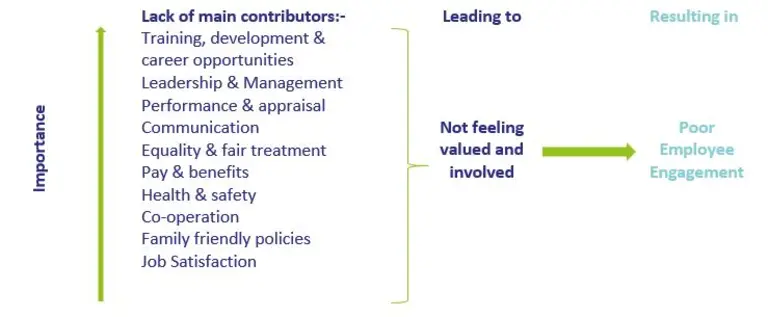
Tell tale signs of the presence and absence of employee engagement
It may be obvious when your more passionate, hardworking people have your business’s goals at heart. Less obvious when those who are disengaged are, to some degree, undermining others. Here is a scale of behaviours that demonstrates the presence or absence of workforce engagement:
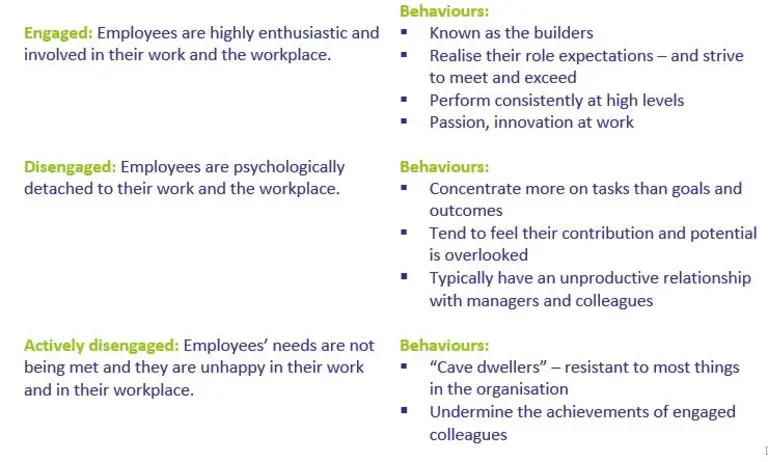
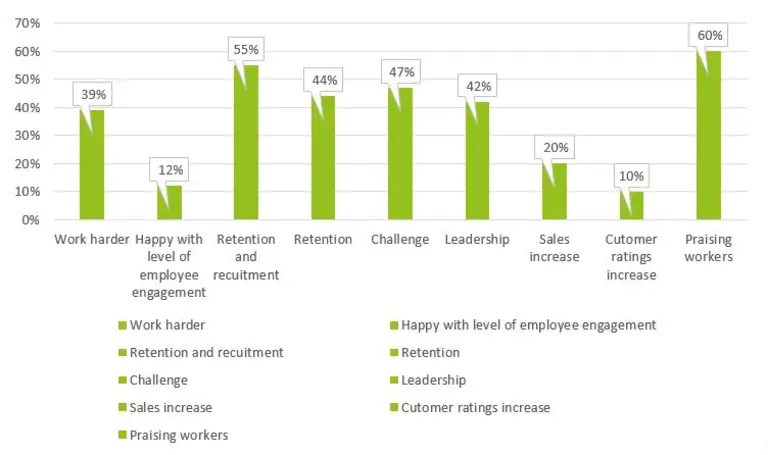
Wellbeing and happiness crop up consistently in employee- and employer-reported levels of engagement. The figures reveal:
- 39% of workers would work harder if they were happy in their place of work/current role
- 42% of employees feel their leadership does not contribute to a positive company culture
- Only 12% of businesses are happy with their current levels of employee engagement
- 55% of businesses think a stronger engagement would improve retention and recruitment
- 44% of businesses think improved employee engagement would lead to being able to better retention
- 47% of HR leaders cite employee turnover and retention as their top challenge
- 60% of workers would like to be praised in work more frequently
Developing and maintaining a committed base of employees requires a culture of engagement. Companies that do this successfully actively demonstrate and promote engagement initiatives, so that employees feel entitled to wellbeing. Such initiatives could range from regular employee feedback groups, to meditation classes, free fruit, or negotiated discount on subscriptions.
Asking employees how they feel they could be happier and better engaged is key to shifting mindsets and embracing the engagement culture:
- Communicate well – encourage employees to be involved
- Ensure your leaders and managers listen and stay aware of employee concerns
- Utilise engaged employees as your champions of change
- Recognise and communicate the positives where jobs are energised and enhanced by change
Why invest in employee engagement?
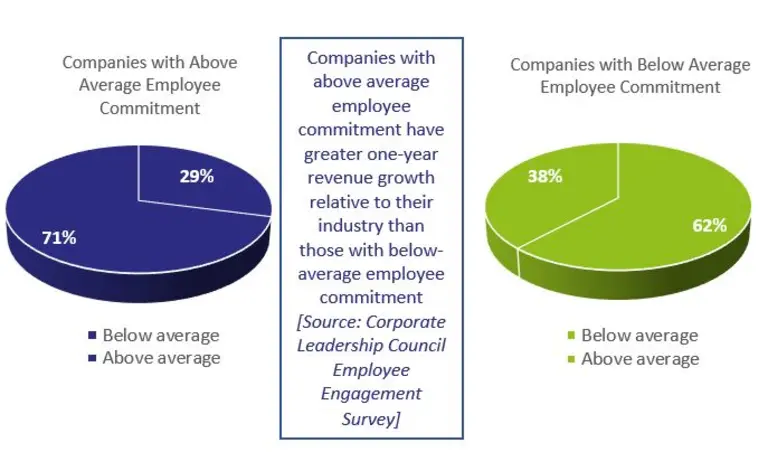
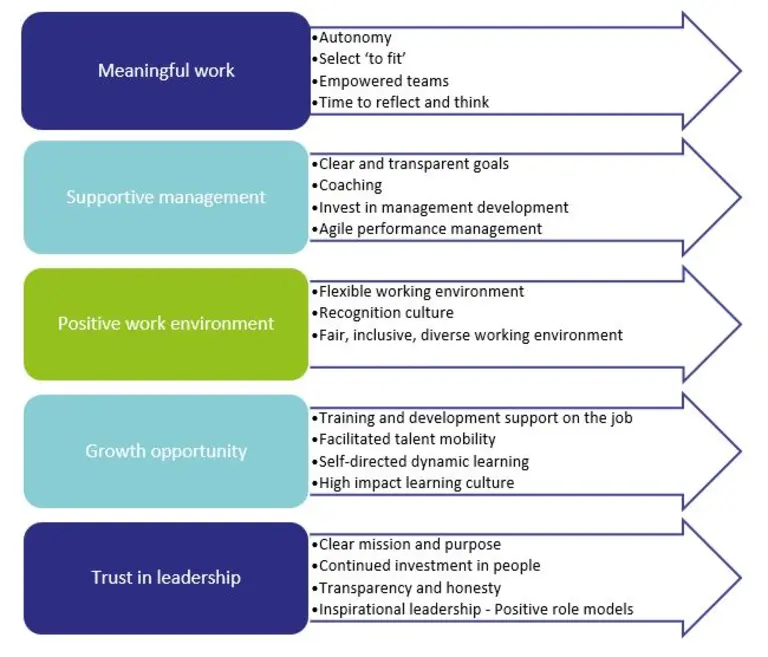
How to embed Employee Engagement
Keeping an engaged workforce whilst managing your operations and bottom line performance, can be a challenge. Our team of barristers, solicitors and HR professionals can provide expert advice and guidance to help you develop a productive workforce and maintain employee engagement across your entire organisation. Our range of online guidance and resources also provide useful toolkits, templates and policy documents to help you stay complaint and allow your business to thrive.
